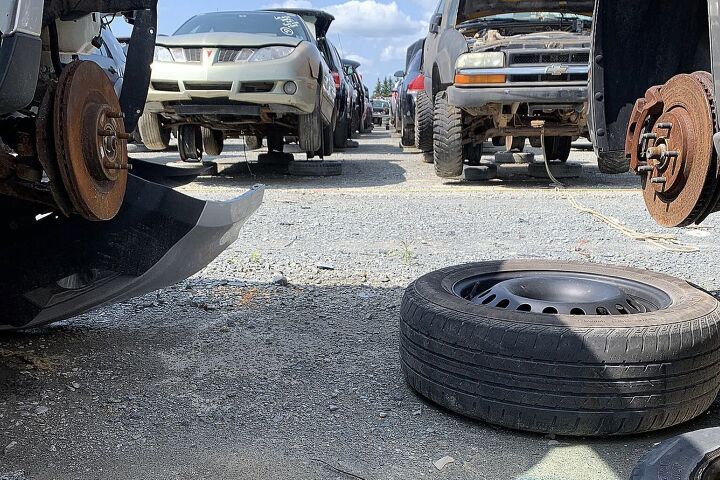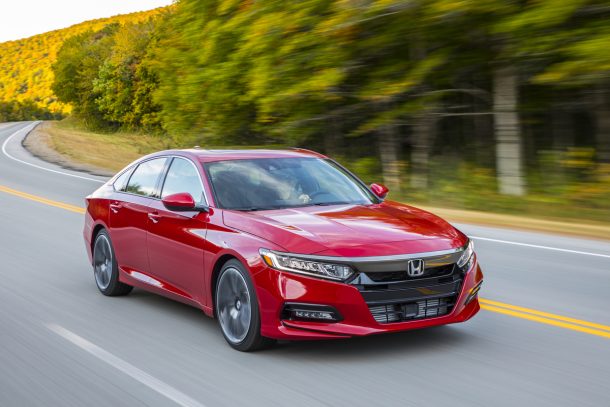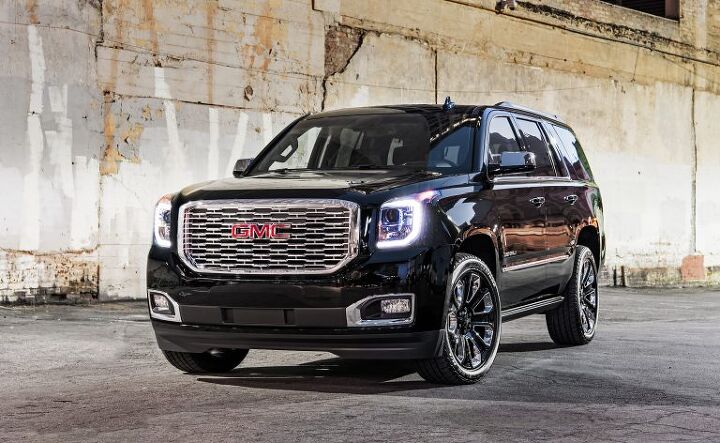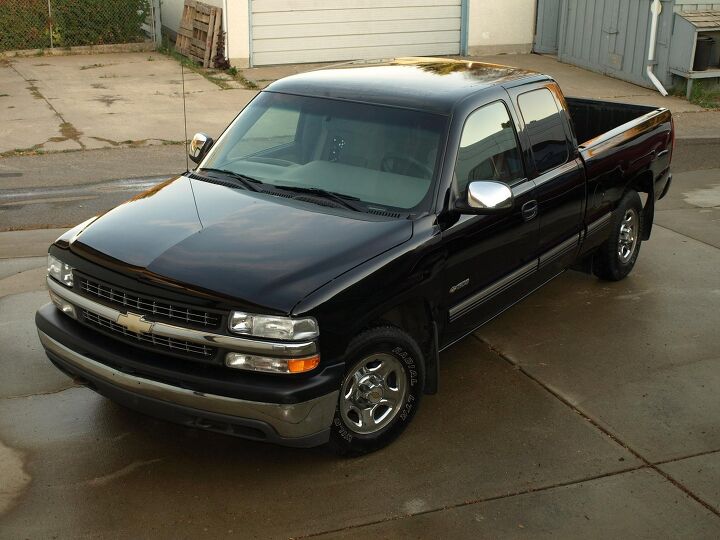#LightTrucks
We’re Poor and Drive Old Cars: Average Vehicle Age Continues to Rise
It seems most Americans are continuing to hang onto their cars for extended periods of time, with a new report suggesting the nation’s average vehicle age is 12.5 years. According to the crew at S&P Global Mobility, it’s the sixth straight year this number has increased.
As Pedestrian Deaths Spike, Safety Group Puts the Spotlight on SUVs
We’ve already told you that, while traffic fatalities dropped in 2017, pedestrians deaths showed the opposite trend. Now, preliminary data from 2018 suggests pedestrians deaths rose to their highest point since 1990 last year, and one group claims high-riding crossovers and SUVs are a big part of the problem.
How big? According to the Governors Highway Safety Association, pedestrian fatalities involving SUVs rose 50 percent in the past five years.
Honda's Starting to Sound a Lot Like Toyota
Of all the automakers populating this vast land, none display quite same the level of guarded optimism for the passenger car’s future as Toyota. Two years ago, if you recall, it boldly declared that its new Camry might save the midsize sedan segment. Well, there’s now a new entry in the rose-colored glasses race.
Honda feels that public distrust in the ability of a four-door sedan to carry occupants to their intended destination has pretty much bottomed out.
A Decade After the Recession (and the Car's Last Hurrah), Light Trucks Continue Gaining Ground
Ten years of lost time has a way of diminishing past events, even one so extreme as the global financial meltdown of 2008-09. It also pushes aside memories of a lot of vehicles that still lingered on the market a decade ago.
At the time, the U.S. economy found itself in freefall. Unemployment rose like a Saturn 5 rocket bound for lunar orbit, gas prices spiked as oil suddenly gained the value of a icy cold canteen on a desert island, and auto sales tanked like Lindsay Lohan’s career. Trucks and SUVs, which were gaining ground throughout the 2000s, ceded territory to passenger cars as the overall industry shed 3 million sales in 2008. The following year brought the worst of it, followed by a steady climb out of the depths. Happier days, just not for traditional passenger cars.
What a difference a decade makes.
Tipping the Sales Scales: Honda's Light Trucks Continue Filling the Hole Left by Cars
It’s nothing new in the industry, nor is it at all uncommon, but Honda’s distinctly balanced product mix continues to tip ever further towards the trucks and SUV side, despite the assertion of American Honda’s assistant VP of sales, Ray Mikiciuk, that cars will continue as the brand’s mainstay.
With the same number of selling days as August 2017, last month showed the automaker’s volume on the upswing, propelled by the strength of light truck sales. In keeping with the theme of balance, only one mainstream car saw its sales increase, year over year, while only one light truck model saw its sales decrease.
June 2018 U.S. Auto Sales: Y'all Like Trucks - A Lot
A sea of green greets execs at major automakers this morning, providing a feeling of relief not unlike that of a weary travelling viewing the flight board at JFK where all flights read “On Time.” Come to think of it, that example is surely one of fiction. Anyway…
Unsurprisingly, light trucks and SUVs are the main reason for industry gains, driven by insatiable consumer thirst for tall wagons and vehicles with a pickup bed. This is a familiar refrain in an industry that is up nearly two percent so far this year.
Smaller Pickups Outperformed the Big Boys in IIHS Overlap Crash Test
The Insurance Institute for Highway Safety recently ran eight pickups through the small overlap front crash test, which replicates one of the most infamous and deadly of accident types — one where the front corner of a vehicle collides with another vehicle or object. The segment, which the IIHS called “small pickups,” could easily be categorized as midsize. But, with no smaller options currently available in the domestic market, their terminology works well enough.
So, how did the smaller pickups stack up when hurled toward a concrete pylon at 40 miles an hour? A little better than you might expect.
If we were absolutely forced to drive into a brick wall, we’d probably prefer to be seated in a full-size truck — specifically the Ford F-150 SuperCab. But the junior pickup group wasn’t a segment full of deathtraps. In fact, they suffered less structural deformation overall and posed less risk of injury to the lower leg region when compared to their full-size brethren. There were exceptions, however.
Japanese Automakers Desperate to Spackle Gaps in Their Lineup
With trucks and crossovers dominating more of the market every month, Japanese automakers are making every effort to bring in new models that will satisfy consumer demands. Soundly constructed economy vehicles have long been the cornerstone of most Japanese nameplates but, with reliability improving among many brands and fuel efficiency being less important to consumers, we’re seeing a shift in the Far East.
Everyone from Toyota, Mazda, Honda, and Nissan have all expressed plans to focus on light trucks this year. Some Japanese brands are even banking on the continued growth of the segment to stage their comeback. “I think SUV sales will continue growing even if gas prices rise,” Mitsubishi CEO Osamu Masuko explained, citing the consumer appeal of higher seating and overall sense of safety. “The SUV segment is increasing its market share worldwide, and this is where we have long been strong,” he said. “So, we will continue to make full use of this technology.”
Your Love for Trucks Has Average Transaction Prices Beating Inflation
All that leg-stretching, snot-nosed kid-hauling, hockey equipment-carrying, ATV-lugging space that new vehicle buyers so desperately crave comes at a premium.
Thanks to this insatiable thirst for crossovers, SUVs, and pickups, the average new vehicle transaction price jumped to a new record in 2016. Good news for manufacturers, but also for those selling their old ride.
Chart Of The Day: Cars Vs. Light Trucks Over The Last Decade
After selling in virtually identical numbers in 2013, light truck sales in the United States overtook car sales in 2014 for the first time since 2011.
Light trucks, a category which encompasses everything from pickups and body-on-frame SUVs to minivans and commercial vans to SUVs and very car-like crossovers, accounted for 52% of U.S. new vehicle volume in 2014, up from 49.9% in 2013.
General Motors Digest: July 8, 2014
In today’s General Motors Digest: Replacement ignition switches are shipping to dealership service bays in boxes that may not reflect the contents inside; GM hands over 2 million documents to the United States House of Representatives; and certain truck owners are on their own as far as rusty brake lines are concerned.

























Recent Comments